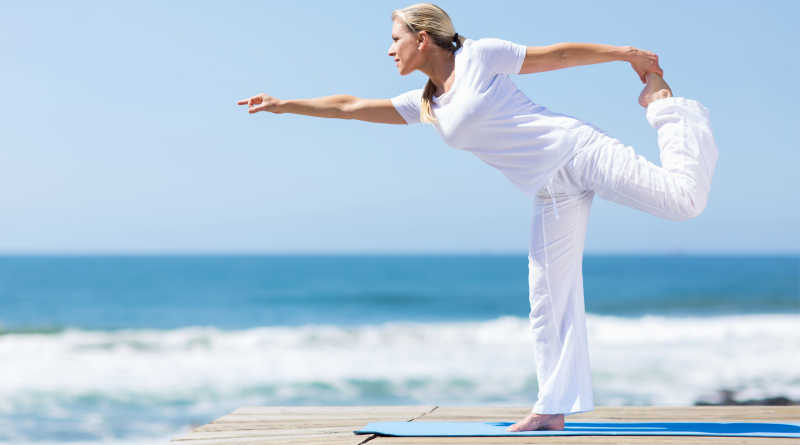
How Exercise Helps Combat the Effects of Ageing on the Body Systems
Cardiovascular changes
Inactivity causes the heart to lose strength. Less strength means it’s less efficient in pumping oxygen around the body. Regular aerobic activity will help maintain heart health. Lifestyle factors such as smoking, obesity, & high cholesterol can all lead to a furring up (narrowing) of the arteries which can lead to an increased risk of Heart Disease, Stroke or Heart Attack. Around a third of all adults in the UK have High Blood Pressure. (NHS..uk)
Muscular change
As we age we lose muscle mass/strength which is know as Sarcopenia. Women are more prone to this as they have less muscle mass to begin with. This loss of muscle in our large muscle groups can cause our reaction time to slow and can therefore increase incidents of loss of balance or falling over. Performing everyday tasks such as housework or gardening and exercise can help build muscle strength and keep flexibility. Exercise has been shown to reduce falls by 21%
Skeletal changes
Joint stiffness happens as we age due to the glossy surface at the end of a bone, becoming rough and also the fluid that helps the joint move becomes more viscous. This “wear and tear ” can lead to Osteoarthritis. Osteoarthritis affects appoximately 8.5 million people in the UK, this is the most common form of arthritis. Osteoporosis (thinning bone)is due to our production of minerals in our body slowing down. Lifestyle factors such as poor diet, eating disorders, and low oestrogen (menopause) can all contribute to this disorder. People with Osteoporosis are much more prone to fractures. Postural changes will happen, such a stopped posture, resulting in reduced mobility around the shoulder and neck region, and also Low Back Pain. Exercise to help Osteoarthritis would include rhythmical or gentle repetitive exercises that warms up the joints to get the fluid moving, and for Osteoporosis exercise that loads the bones, such as resistance training, or workouts with light impact.
Respiratory system changes
The average lung capacity as an adult it 6 litres of air, this starts to decline from around 35 yrs old. When we exhale the lungs are not totally emptied of air, around 20 percent is retained, but as we age, this exchange as we breathe decreases and this can equate to a third of lung capacity being lost over time. Due to the lessening of elasticity in the lung tissue which reduces the size of the airways, the diaphram becomes weaker and postural changes occur (stooped), this in turn affects the ribs, so they cannot expand as much to take breath. Lifestyle factors, such as pollution, smoking and inactivity can speed up this process. Respiratory conditions include Asthma, which can be helped with inhalers and COPD for which there is no cure. But exercising in the correct way can help both of these conditions
Nervous System changes
This neurological system controls things such as cognitive function (memory), motor responses (movement). as well as vision, hearing, taste and smell (special senses). A decline in motor responses can lead to balance issues and an increased risk of falls, as the muscles cannot react quickly enough. As vision and hearing decline, this can lead to a a change in the perception of the world around you, and affect mood and self confidence. Losing your sense of taste or smell can lead to loss of interest in food, and eating. Cognitive function/memory gently declines upto the age of 60, at which point can rapidly progress, so it’s really important to keep your brain active.
Benefits of exercise
- – Helps maintain mobility, flexibility & strength
- – Helps maintain independent living
- – Will help with motor skills & cognitive function
- – Joining group exercise can combat loneliness
Risks of exercise
The following Risks to exercise should lessen as you become fitter, stronger, more supple and balanced
Higher risk of heart attack or stroke Risk of falls Aggravation of joint or muscle injury Overexertion due to inappropriate exercise
As with all activities, know your limits and capabilities work within your current health and fitness levels. Listen to your body and your intuition. If it doesn’t feel right or comfortable… it probably isn’t for you right now.
With over 20yrs experience, Julia is a highly qualified Fitness Instructor specialising in Zumba, Pilates and Low Impact Interval Training (LIIT) for women in the 50+ age group
Julia believes health and fitness can be achieved no matter what age or size you are and whatever level you start from. She brings a sense of fun, friendship and most importantly, inclusivity to all of her classes whether they are online or through her Milton Keynes based community classes
Contact Details:
https://youtube.com/channel/UCoL0tMPYOQdQUe3yz2yETHQ
https://exstressfitness.myfitnessclass.com/classes
Facebook: Exstress Fitness & Therapy
Instagram : @exstressfitness

